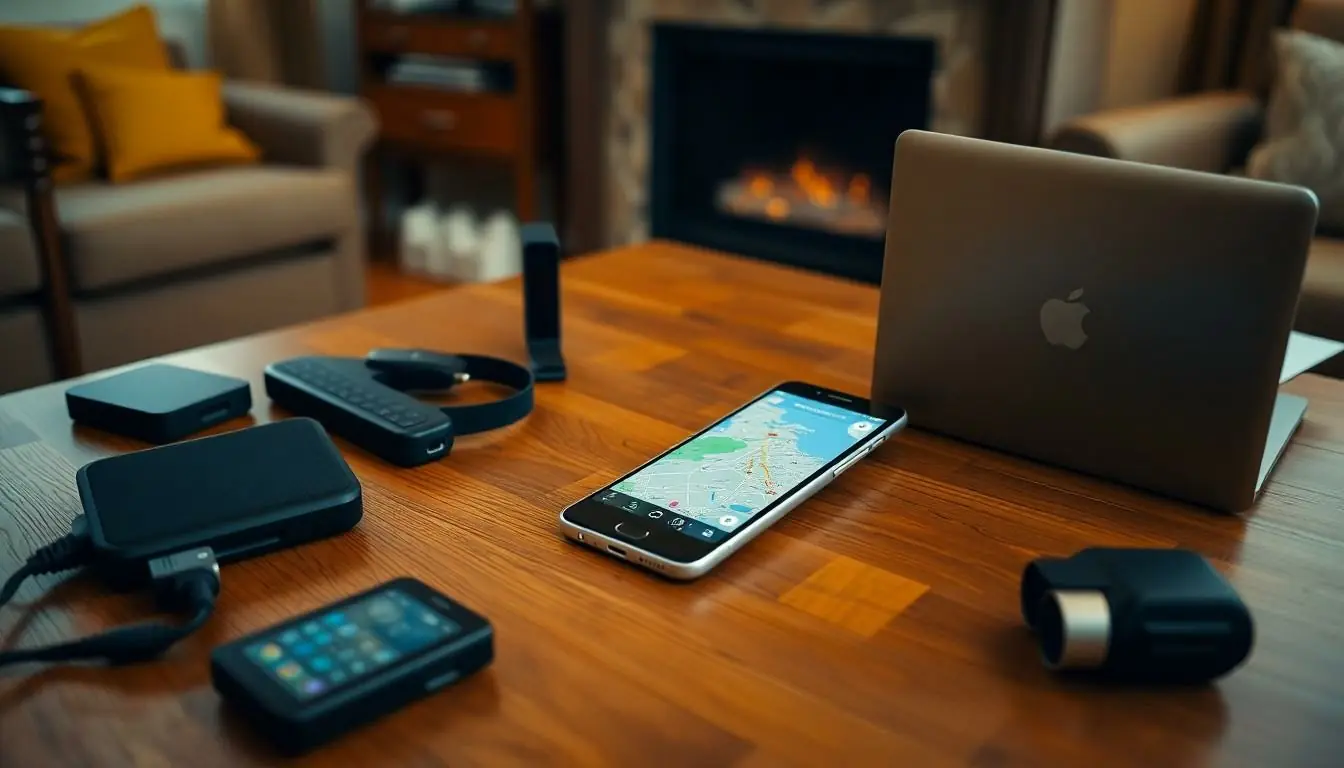Misplacing a smartphone is a universal experience, but what happens when you lose an iPhone and only have an Android to help? Panic sets in, but fear not—finding that elusive device is easier than it sounds. With a little tech savvy and some clever tricks, it’s possible to track down that iPhone faster than you can say “Where did I put it?”
Table of Contents
ToggleUnderstanding The Challenge
Locating a lost iPhone using an Android device presents unique obstacles. The two operating systems, iOS and Android, don’t share compatibility features for tracking lost phones. Specific tools designed for tracking iPhones, like Apple’s Find My iPhone app, don’t work on Android devices.
Time plays a critical role when searching for a misplaced iPhone. Each passing moment increases the likelihood of the iPhone’s battery depleting or it being moved to an unknown location. Frustration can easily set in when searching under these constraints, especially without direct access to an Apple device.
Limited options exist for Android users wanting to locate an iPhone. Online services might offer tracking capabilities, but many require prior setup on the iPhone itself. Complications arise if the lost iPhone lacks connectivity, as the final location information won’t transmit to any service.
Moreover, employing location-sharing applications presents challenges. Users must ensure that their iPhone had the app installed and active prior to being lost. An absence of these preparations limits tracking options, complicating efforts in a time-sensitive scenario.
Battery life further influences the ability to find a lost iPhone. An active simulation, such as ringing the phone or using map services, consumes battery power quickly. Users must act swiftly while also considering that the phone may end up out of battery.
Understanding these challenges sets the foundation for effective tracking methods. Prioritizing quick and efficient strategies will maximize the chances of recovering a lost iPhone using an Android device.
Essential Tools Required
Tracking down a lost iPhone using an Android device requires specific tools and strategies. Familiarity with third-party applications and GPS tracking can greatly enhance the chances of recovery.
Using Third-Party Apps
Research reveals that several third-party applications assist in locating lost devices. Apps like Life360 or Google Maps can provide location-sharing options if installed prior to misplacing the iPhone. Users can leverage these applications to pinpoint the lost device’s last known location. Accessibility hinges on prior setup, as most require permissions beforehand. Many offer features like real-time location tracking, which can be invaluable during a search.
Utilizing GPS Tracking
GPS tracking remains one of the most effective methods to locate a lost iPhone. When enabled, the iPhone continually shares its location with connected services. Android users can access web services such as Google Maps to check location history if the feature was activated. Even if iPhone’s battery runs low, a last known location can provide critical clues. Quick action is necessary to maximize the effectiveness of GPS tracking, as every moment counts in the recovery process.
Step-By-Step Guide
Finding a lost iPhone using an Android device requires a strategic approach. Follow these steps to enhance tracking efforts effectively.
Set Up Location Sharing
Location sharing must be configured beforehand for successful tracking. Install applications like Life360 or Google Maps on the iPhone prior to losing it. Ensure that location permissions are granted within these apps. Activate the location-sharing feature to provide visibility to connected devices. If shared, friends or family members with an Android can access the iPhone’s last known location. Location settings also must include enabling GPS on the iPhone for accurate tracking. Regularly confirm that the location services are functioning to ensure effectiveness.
Use Your Android to Locate the iPhone
Using an Android device for locating the iPhone involves leveraging available web services. Access Google Maps through the Android device’s browser. Log in with the same Google account linked to the lost iPhone if Google Maps was set to track location history. Review the timeline for the last recorded location. If available, additional third-party apps can provide tracking features if they were previously installed on the iPhone. Every action taken quickly enhances the chance of recovering the device before the battery runs out.
Tips and Considerations
Considerations include privacy and security concerns alongside the methods used. Tracking a lost iPhone using an Android device raises questions about data protection. Users should review permission settings before engaging with third-party apps. Some applications request extensive access to personal information, heightening risks if they fall into the wrong hands. Ensuring that data is secure must be a priority.
Methods used for tracking can vary significantly in reliability. Devices with GPS enabled typically allow for more precise tracking. However, trackability becomes less effective if battery life is low. Many third-party apps may provide location-based services but depend on prior setup and active permissions. It’s crucial to confirm GPS services were enabled before losing the iPhone. While recovery is possible, relying strictly on these methods may not guarantee success.
Conclusion
Finding a lost iPhone using an Android device can be a daunting task but it’s not impossible. With the right tools and strategies in place ahead of time users can improve their chances of recovery. Utilizing apps like Life360 or Google Maps can offer valuable assistance if they were set up prior to losing the device.
Quick action is essential as every moment counts in preventing battery drain. While the process may present challenges due to compatibility issues between the two operating systems users can still navigate these obstacles with a proactive approach. By prioritizing location sharing and being mindful of privacy settings tracking a lost iPhone becomes a more manageable task.




